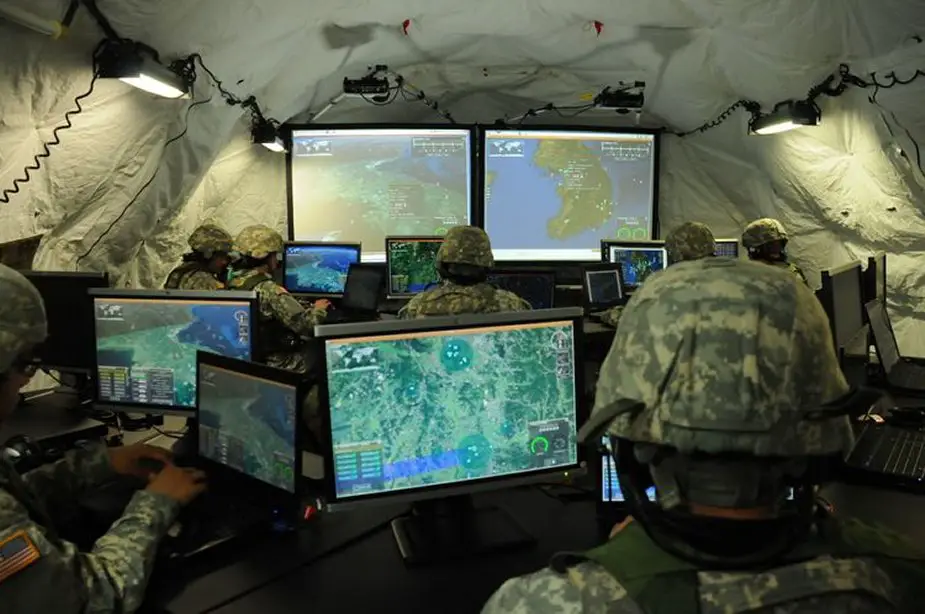Army Recognition looks back to a series of U.S. programs summarized in the FY2019 Annual Report for the Office of the Director, Operational Test & Evaluation. Hereunder, we have a glance at the U.S. Army Integrated Air & Missile Defense (AIAMD).

From integrating weapons developed decades ago with capabilities still in development, to rapidly adding protection against emerging threats and enabling seamless multi-domain operations, through logistics, training and lifecycle support, Northrop Grumman’s Integrated Air and Missile Defense (IAMD) Battle Command System is solving some of the most difficult defense challenges confronting the U.S. and allies today (Picture source: Northrop Grumman)
In April 2019, the U.S. Army started developmental testing (DT) of the Army Integrated Air and Missile Defense (AIAMD) system and conducted a missile flight test in August 2019. In early DT events, the IAMD Battle Command System (IBCS) software version 4.5 demonstrated better stability when compared to version 3.1.1 used in the Limited User Test (LUT) conducted in 2016. The August 2019 missile flight test demonstrated the capability for AIAMD to detect, track, and intercept a subscale target at a distance greater than a Patriot system could achieve on its own.
System
- AIAMD is a command and control system that integrates sensors, weapons, and a common mission command interface across an integrated fire control network (IFCN).
- IBCS provides the common IAMD Mission Control capability, integrating Sentinel air surveillance radars, Patriot radars, and Patriot launchers for improved missile employment.
- AIAMD includes the Engagement Operations Center (EOC), hardware interface kits, and IFCN Relays
- EOCs provide the operating environment for all levels of employment. They are equipped with workstations providing a Common Warfighter-Machine Interface (CWMI) to monitor and direct sensor employment and engagement of air threats.
- The IFCN is the primary communications infrastructure for the AIAMD system to provide fire control connectivity and distributed operations. Hardware interface kits connect Patriot and Sentinel components to the IFCN.
- The IFCN Relay provides a mobile IFCN communications node with an interface kit to extend connectivity to the remote launchers and sensor platforms.
Mission
- Army commanders will use AIAMD to provide timely detection, identification, monitoring, and (if required) engagement of air threats in an assigned area of responsibility.
- AIAMD will deploy to provide active protection for the following:
- Air defense of the homeland
- Air defense of priority critical assets and locations
- Air defense of forces
Major contractors
- Northrop Grumman – Huntsville, Alabama
- Raytheon – Huntsville, Alabama, and Andover, Massachusetts
- Lockheed Martin – Dallas, Texas
Activity
- In April 2019, the Army started DT of new IBCS software, version 4.5, in accordance with the DOT&E-approved Test and Evaluation Master Plan.
- The Army has begun qualification testing of redesigned AIAMD hardware. The testing includes transportation, mobility, and electromagnetic environmental effects, as well as multiple environmental conditions in the McKinley Climatic Laboratory at Eglin AFB, Florida.
In August 2019, the Army executed Missile Flight Test 4 at White Sands Missile Range (WSMR), New Mexico, with two Sentinel radars, one Patriot radar and one Patriot launcher on the IFCN.
- Operators used the networked Sentinel radars to detect the target and create a composite track for a cruise missile surrogate at a distance beyond the Patriot radar coverage.
- The operators used the CWMI to command the launch of a single Patriot Advanced Capability (PAC)-3 Cost Reduction Initiative (CRI) missile, which intercepted the target near the maximum kinematic range of the PAC-3 CRI.
- The Army has improved the data collection and reduction capacity at WSMR and intends to increase the network infrastructure at the Aberdeen Test Center, Maryland, to support analysis for the next LUT.
- In August 2019, the AIAMD Project Office started New Equipment Training for soldiers of the 3rd Battalion, 43rd Air Defense Artillery Regiment at Fort Bliss, Texas. These soldiers will be operators during the LUT planned to begin in April 2020.
- The Army plans to execute Missile Flight Test 5 in December 2019 at WSMR with two Sentinel radars, one Patriot radar, and four Patriot launchers on the IFCN.
- Soldiers will use the networked Sentinel and Patriot radars to acquire and track the targets, and then use the CWMI to command the launch of a PAC-3 Missile Segment Enhancement interceptor and a Guidance Enhanced Missile Tactical Ballistic Missile (TBM) (GEM-T) interceptor against a TBM surrogate while simultaneously engaging a cruise missile surrogate with another GEM-T interceptor.
Assessment
- Missile Flight Test 4 analysis is ongoing. The engagement was successful, but operators observed off-nominal behavior during launcher emplacement and initialization.
- During early DT events, AIAMD demonstrated improved hardware reliability and software stability when compared to DT events using software version 3.1.1 leading to the 2016 LUT.
Recommendation
The Army should conduct a pilot test to demonstrate adequate data collection, reduction, analysis, and delivery prior to the start of the LUT planned for 2020.














